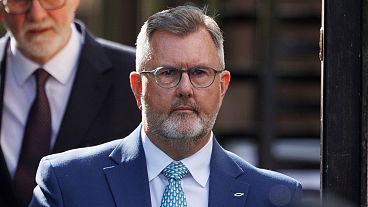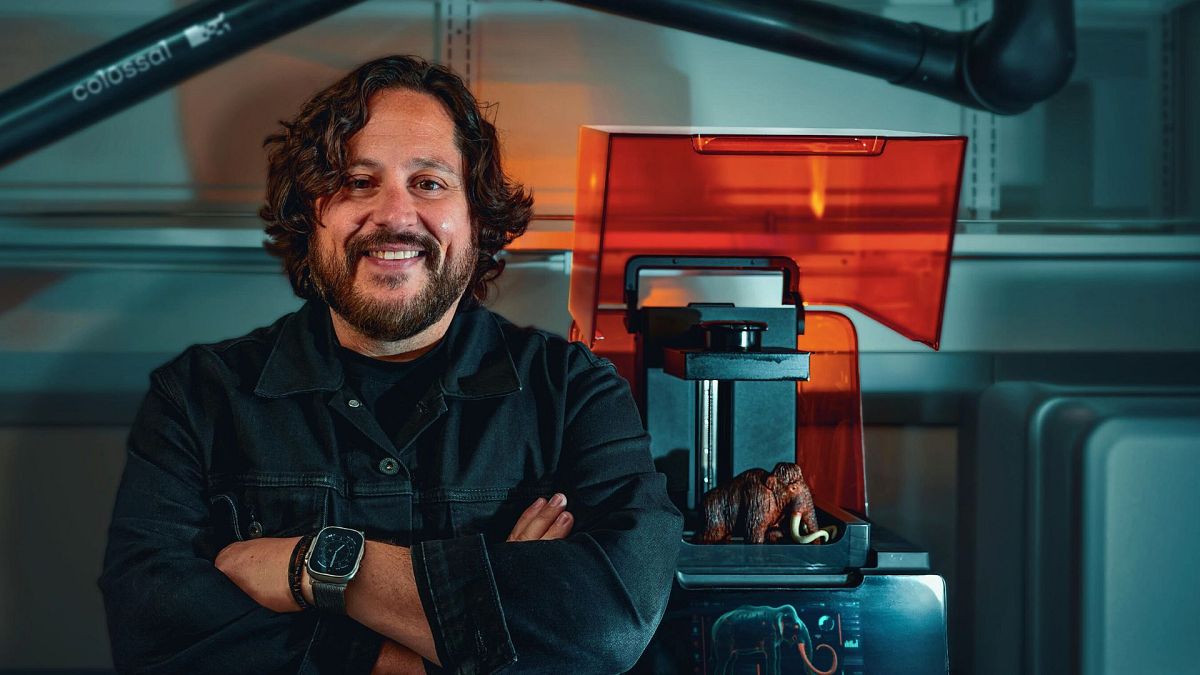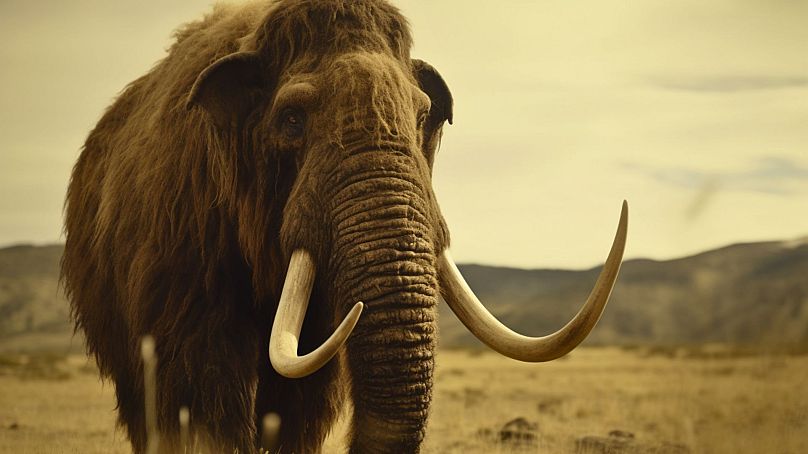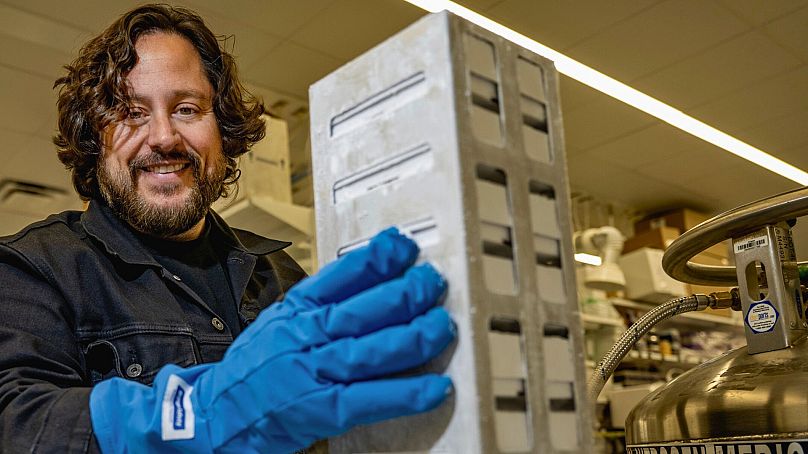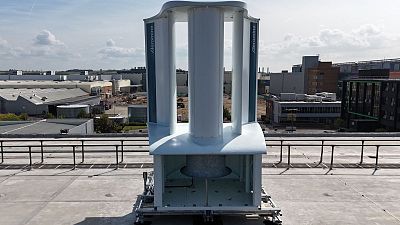De-extinction tech has an ‘amazing halo effect’, Colossal’s co-founder says.
“I don’t want to break hearts on this but I do not believe it's possible to bring back a dinosaur,” says Ben Lamm, CEO and co-founder of Colossal.
But his de-extinction company’s goals are no less fantastical: it promises a woolly mammoth calf born from genetically modified elephant cells by 2028 - or perhaps even sooner.
“I think we're closer to de-extinction than the general public thinks,” says the tech entrepreneur, referring to the process of resurrecting species that have died out.
It’s not all Jurassic Park non-fiction, though. Colossal’s vast brainpower and over $235 million in funding also fuels rewilding and biodiversity restoration projects around the world.
“We believe de-extinction and species preservation go hand in hand,” says Lamm.
Rewilding: A nature based solution to climate change?
Protecting and restoring nine key species - among them, African forest elephants, American bison, grey wolves and sea otters - and their functional roles could seriously enhance natural carbon capture and storage, according to a 2023 study published in the Nature Climate Change journal.
It claims that such a rewilding project could help us stay within the 1.5C warming limit set by the Paris Agreement.
The agreement itself puts great weight on nature-based solutions to climate change, which account for 66 per cent of its pledges, eclipsing both technological solutions and limitations.
Partnering with organisations like Re:wild and the International Union for Conservation of Nature (IUCN), Texas-based Colossal is working to reintroduce dwindling species to the habitats that need them.
“I think we've got to figure out new technologies, cleaner technologies, but we've also got to figure out ways that we can leverage technology to empower nature to do what it was already designed to do better than we're going to do through technology,” says Lamm.
But is de-extinction a realistic path to nature restoration and could it have unintended consequences? Euronews Green spoke with Lamm to find out.
Could bringing back the woolly mammoth give biodiversity a boost?
In theory, reintroducing woolly mammoths to the mossy Arctic tundra could restore it to the carbon sequestering grassy steppe of the Ice Age.
“Some ecosystems like the tundra need this herbivore boost,” says Lamm. Grazing mammoths could scrape away snow, allowing the cold air to reach the soil, and fertilise the earth with their dung, encouraging grass growth. They could compact the ice with their heavy gait, slowing permafrost melt - all to planet cooling effect.
“We’ve seen certain models like in Pleistocene Park where the right density of herbivores can lead to a nitrogen-oxygen cycle that starts to replenish those grasslands,” Lamm continues, referring to the nature reserve in Russia that aims to recreate the Pleistocene-era mammoth steppe.
A recent study, not linked to Colossal, laid out the potential of more tangible rewilding efforts. It suggested that reintroducing a herd 170 European bison to Romania’s Țarcu mountains could help capture and store the carbon released by up to 84,000 average US petrol cars each year. Colossal, too, is working with an Indigenous council in North America to see whether ancient bison lines could be revived for their ecological benefits.
Critics have raised ecological and ethical concerns, though.
Will current habitats be able to sustain the animals? What will the impact be on those who now occupy these landscapes? And could these vast sources of funding be better spent elsewhere?
‘We don’t just cross our fingers and hope it works’
Rather than reviving the vulnerable tusked species of millennia gone by, Colossal - which Lamm founded in 2021 with leading American geneticist George Church - is working on a hybridised, cold-adapted elephant with woolly mammoth DNA.
While calves may be imminent, their reintroduction into the wild is not.
“It’s not like we go make 1,000 animals and open the gates and cross our fingers and hope it works,” says Lamm.
“Rewilding goes through a very detailed, measured, stage gated plan, where you move from a facility to a larger enclosed facility to an expansive preserve and beyond until you get to the wild…
“Those plans will take just as long as the engineering of the animals themselves - maybe in some cases more.”
A peer reviewed feasibility and impact study released by the company in February explores how many mammoths could exist and at what latitude, as well as their potential ecological impacts.
In other rewilding cases, the invasive species that led to another species’ demise may be removed, with positive outcomes for the native ecosystem at large.
Various stakeholders - from Indigenous groups to lobbying interests - are also consulted throughout the process.
Overall, Lamm says this raises the chances of “establishing integratable populations that can survive and be sustained in their original environments” and ensures “there’s a lot more intended consequences than unintended consequences”.
Using tech breakthroughs to save existing species
In the meantime, the scientific leaps made in the process give living species a boost.
Likening de-extinction to the Apollo moonshot, “but for biology”, Lamm cites the recent breakthrough EEHV vaccine developed by Colossal. It targets the endotheliotropic herpesvirus, which kills a fifth of all elephants born in zoos in Europe and the USA, and is also deadly to wild herds.
Under-researched for decades, the virus may now have a cure after being resourced for less than three years by the company. Colossal's first EEHV vaccine was given to an Asian elephant at Houston Zoo in Texas in June.
“That's pretty awesome,” says Lamm, who adds that all of Colossal’s conservation technologies are shared with the world for free as part of their mission.
Other species that stand to benefit from Colossal’s tech breakthroughs include critically endangered northern white rhinos and vaquita porpoises.
Does de-extinction give humans an excuse to carry on polluting?
Some critics argue that making extinction less finite dulls the urgency of the biodiversity crisis.
While Lamm doesn’t think it’s realistic that consumer behaviour will permanently switch to the levels of the pandemic, when people sat at home and the world began healing itself, he believes that Colossal’s work has an “amazing halo effect” that actually drives interest in protecting nature.
“I don’t think that de-extinction technologies and species preservation will change people's belief in love and affection for nature. I think it'll do exactly the opposite,” he says.
“I think it will increase people's connection with nature and [help them] recognise that we, as humanity, have technologies that we can develop to undo some of the sins of the past that other generations and we are also contributing to.”
But simply reviving every species that’s been wiped out isn’t a realistic solution.
“Bringing animals back is really expensive… it's cost prohibitive to bring back all of those species. It's much better to save what we have.”
Through Colossal’s work with major conservation groups, it’s “bringing awareness to some of the biggest issues out there”.
The headline-grabbing return of species like the woolly mammoth “give us this flagship moment to rally behind. Not just for conservation, but also for human health care, because a lot of the technologies that we're developing have applications to humans.” says Lamm.

